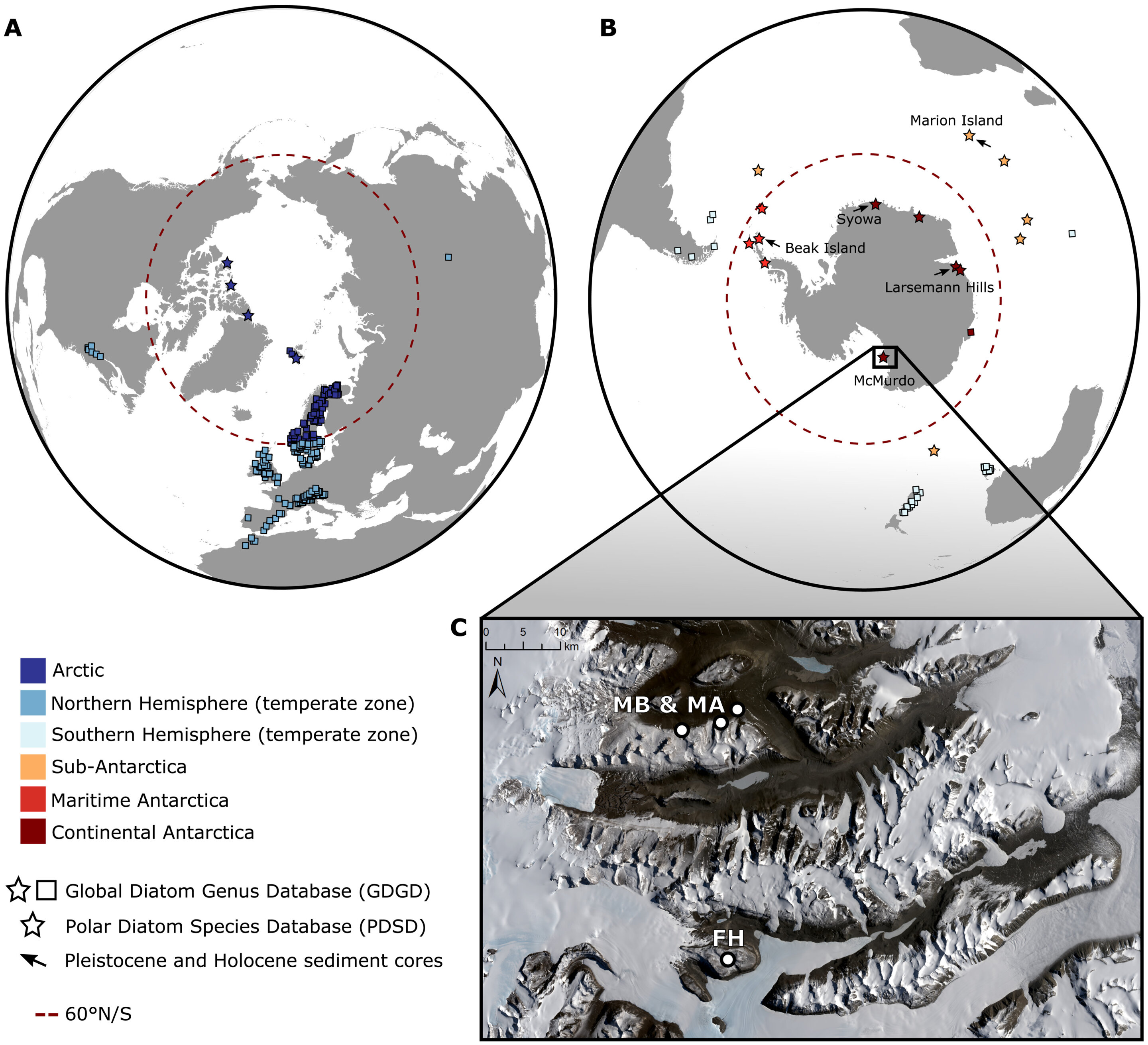
Fig. 1. These maps show the locations of fossil and modern material. The six main biogeographical zones are distinguished by the color of sampling locations. The squares and stars indicate the current locations of communities that are part of the Global Diatom Genus Database. Those belonging to the Polar Diatom Species Database are marked with stars. Arrows are used to indicate sampling locations for sub-fossil sediments. Multiple water bodies may be included in sampling locations. Tables S5 and S6 provide a complete list of sampling locations. (C) Satellite image showing location of fossil Miocene Diatom deposits in McMurdo Dry Valley (Transantarctic Mountains), along with indications of sampling locations in Mount Boreas, Mount Aeolus (MA), or the Friis Hills. Image (C) represents a Landsat 8 image, courtesy of U.S. Geological Survey, taken on 17 December 2019. Credit: DOI: 10.1126/sciadv.abh3233
Scientists believed that microorganisms were less susceptible to climatic changes because of their wide distribution than animals and plants, which often have very restricted distribution areas. This assumption was held for a long time. An international team of researchers from Ghent University, Meise Botanic Garden and other institutions proved that this assumption was incorrect by studying fossils of Antarctic microorganisms.
The Antarctic Continent experienced a sub-polar climate during the Early Miocene about twenty million years ago. The entire continent was covered in forests and tundra vegetation. The situation was abruptly changed when 14 million years ago the continent started to cool down quickly. Ice sheets began expanding over Antarctica and many species of animals and plants became extinct.
Diverse Miocene diatom flora
Researchers analyzed diatoms found in Antarctic lake sediments that were 14- to 15-million years old, which was deposited before the Miocene cooling. Diatoms are an algal group that is both ecologically and highly diverse. They can fossilize easily due to the amorphous glass cell walls.
The team was surprised to discover more than 200 diatom species in the sediments. Almost every species was brand new to science. The researchers also analyzed lake sediments at the genus level. This is the classification level that is above the species. The analysis revealed that the Miocene Antarctica species composition was very different from the Antarctica diatom flora, which contains far fewer species. The Miocene diatom fauna is similar to species-rich floras found in warmer regions of South America, Australia, and New Zealand. The researchers concluded that the Miocene Diatom Flora in Antarctica was largely extinct due to climate change fourteen million years ago. Researchers believe that Antarctica's diatom flora is extremely diverse and evolved from the few survivors in the Miocene flora, as well as new settlers who are more adapted to the cold.
Climate change is causing extinctions waves
Researchers conclude that large-scale extinctions could occur due to major climate changes such as the Miocene Antarctica. It is vital to understand how climate change and environmental changes will impact microorganisms' role in ecosystem health.
Continue reading History of Antarctic Ice Sheets holds clues to our future
More information: Eveline pinseel et. al., Extinctions of austral diatoms as a response to large-scaleclimate dynamics in Antarctica Science Advances (2021). Information from Science Advances Eveline Pinel et. al., Extinction in austral diatoms as a response to large-scaleclimate dynamics in Antarctica (2021). DOI: 10.1126/sciadv.abh3233
